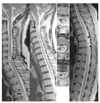References
1. Kira J. Multiple sclerosis in the Japanese population. The Lancet Neurology 2003. 2117–127.
2. Devic E. Myelite subaigue compliquee de neurite optique. Bull Med 1894. 81033–1034.
3. Wingerchuk DM, Hogancamp WF, O'Brien PC, Weinshenker BG. The clinical course of neuromyelitis optica (Devic's syndrome). Neurology 1999. 531107–1114.
4. Swingler RJ, Compston DAS. The clinical features of multiple sclerosis in south east Wales. Q J Med 1992. 83325–337.
5. Kim KK. Optico-spinal multiple sclerosis and neuromyelitis optica. J Kor Neurol Assoc 2006. 24S. 66–69.
6. Kira J, Kanai T, Nishimura Y, Yamasaki K, Matsushita S, Kawano Y, Hasuo K, Tobimatsu S, Kobayashi T. Western versus Asian types of multiple sclerosis: immunogenetically and clinically distinct disorders. Ann Neurol 1996. 40569–574.
7. Shibasaki H, McDonald WI, Kuroiwa YJ. Racial modification of clinical picture of multiple sclerosis; comparison between British and Japanese patients. J Neurol Sci 1981. 49253–271.
8. Yu YL, Woo E, Hawkins BR, Ho HC, Huang CY. Multiple sclerosis amongst Chinese in Hong Kong. Brain 1989. 1121445–1467.
9. Yu YL, Woo E, Hawkins BR, et al. Multiple sclerosis among Chinese in Hong Kong. Brain 1989. 1121445–1467.
10. Lennon VA, Kryzer TJ, Pittock SJ, Verkman AS, Hinson SR. IgG marker of optic-spinal multiple sclerosis binds to the aquaporin-4 water channel. JEM 2005. 202473–477.
11. Lennon VA, Wingerchuk DM, Kryzer TJ, Pittock SJ, Lucchinetti CF, Fujihara K, Nakashima I, Weinshenker BG. A serum autoantibody marker of neuromyelitis optica: distinction from multiple sclerosis. Lancet 2004. 3642106–2112.
12. Nakashima I, Fujihara K, Miyazawa I, Misu T, Narikawa K, Nakamura M, et al. Clinical and MRI features of Japanese MS patients with NMO-IgG. JNNP 2006.
13. Compston A, ed. McAlpine's Multiple Sclerosis: The diagnosis of multiple sclerosis 2006. 4th edth ed. Churchill Livingston; 351–388.
14. Miller DH, Rudge P, Johnson G, Kendall BE, Macmanus DG, Moseley IF, Barnes D, McDonald WI. Serial gadolinium enhanced magnetic resonance imaging in multiple sclerosis. Brain 1988. 111927–939.
15. Cotton F, Weiner HL, Jolesz FA, Guttmann CR. MRI contrast uptake in new lesions in relapsing-remitting MS followed at weekly intervals. Neurology 2003. 60640–646.
16. Kidd D, Thorpe JW, Kendall BE, Barker GJ, Miller DH, Mc-Donald WI, Thompson AJ. MRI dynamics of brain and spinal cord in progressive multiple sclerosis. J Neurol Neurosurg Psychiatry 1996. 6015–19.
17. Thompson AJ, Kermo AG, Wicks D, MacManus DG, Kendall BE, Kingsley DP, McDonald WI. Major differences in the dynamics of primary and secondary progressive multiple sclerosis. Ann Neurol 1991. 2953–62.
18. van Waesberghe JH, Kamphorst W, De Groot CJ, van Walderveen MA, Castelijns JA, Ravid R, Lycklama a, van der Valk P, Polman CH, Thompson AJ, Barkhof F. Axonal loss in multiple sclerosis lesions: magnetic resonance imaging insights into substrates of disability. Ann Neurol 1999. 46747–754.
19. Uhlenbrock D, Sehlen S. The vaule of T1-weighted images in the differentiation between MS, white matter lesions and subcortical arteriosclerotic encephalopathy (SAE). Neuroradiology 1989. 31203–212.
20. Bagnato F, Jeffries N, Richert ND, Stone RD, Ohayon JM, Mc-Farland HF, Frank JA. Evolution of T1 black holes in patients with multiple sclerosis imaged monthly for 4 years. Brain 2003. 1261782–1789.
21. McDonald WI, Compston A, Edan G, Goodkin D, Hartung HP, Lublin FD, McFarland HF, Paty DW, Polman CH, Reingold SC, Sandberg-Wollheim M, Sibley W, Thompson A, van den Noort S, Weinshenker BY, Wolinsky JS. Recommended diagnostic criteria for multiple sclerosis: guidelines from the International Panel on the diagnosis of multiple sclerosis. Ann Neurol 2001. 50121–127.
22. Compston A, ed. McAlpine's Multiple Sclerosis: Disease-modifying treatments in multiple sclerosis 2006. 4th edth ed. Churchill Livingston; 729–810.






